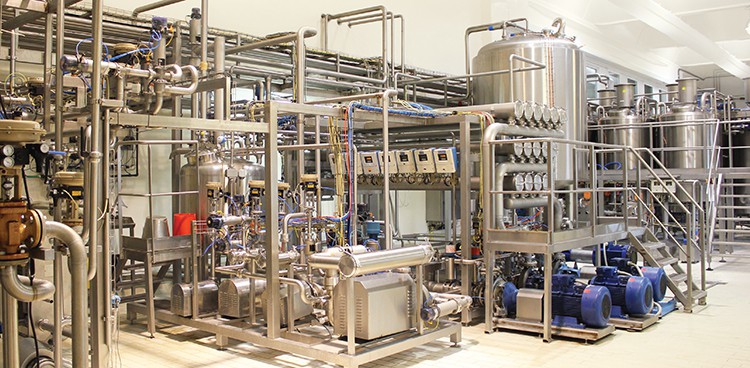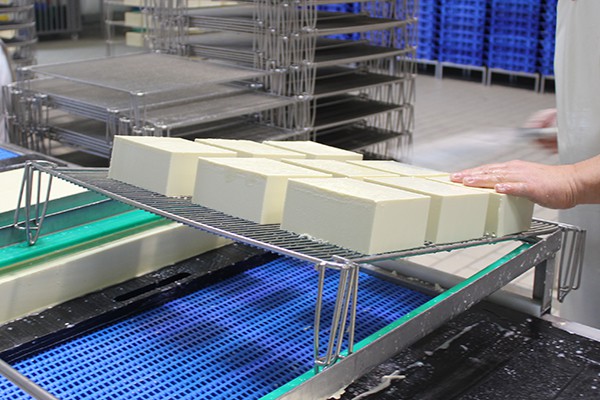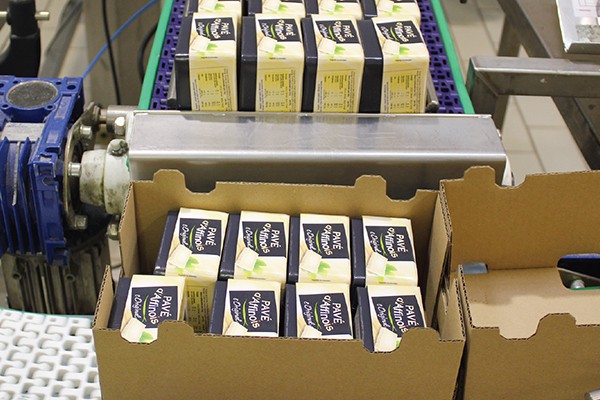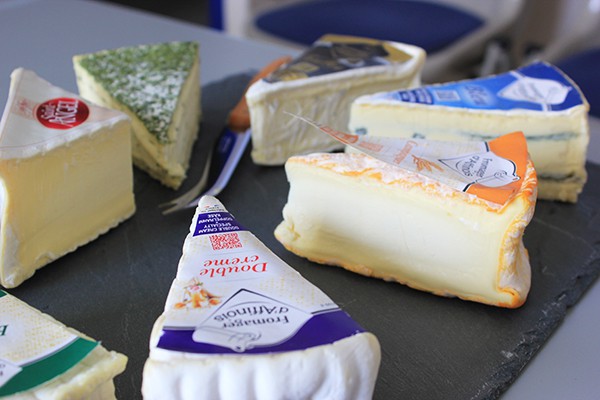
In 1971 two young scientists, Jean-Louis Maubois and Germain Mocquot, published a paper in the French dairy science journal Lait. While the title may have been yawn-inducing (“Preparation of cheese from liquid pre-cheese obtained by the ultrafiltration of milk”), its contents were groundbreaking. Maubois and Mocquot had detailed a newly patented technology that essentially turned the cheesemaking process—relatively constant for thousands of years—on its head.
Traditional cheese production is based on the separation of solid from liquid. Milk is heated, cultures and a coagulating agent are added, and then the liquid whey separates from solid curd. Milk is almost 90 percent water, so the process is messy and wet. Curds are cut and stirred until they’re the desired size with the right moisture content, while whey continues to drain off gradually as cheeses are formed, pressed, and flipped.
But what if curd creation wasn’t necessary to separate out the whey? What if you could remove the whey from milk before cheesemaking began? Maubois and Mocquot found a way to do just that. They were the first to introduce ultrafiltration (UF)—pumping a liquid continuously through a porous membrane, separating its solid and liquid parts—to cheesemaking. When pushed through the membrane, the milk sheds its water (along with some salts and nitrogen) but retains larger molecules (fat, proteins, and insoluble salts). After passing through repeatedly, that milk becomes a concentrate, called “pre-cheese,” which is then inoculated with cultures and coagulated with rennet. There’s no need for subsequent liquid removal—no cutting, stirring, pressing, or draining curds—as in traditional cheesemaking. Just slice the curdled concentrate into a desired shape to create cheese.

Newly formed blocks of ultrafiltered cheese at Fromagerie Guilloteau
There are plenty of reasons to do it this way. The whey discarded in regular cheesemaking isn’t just water; in fact, there’s still protein, fat, and minerals in it. Whey produced through UF, however, is nearly crystal-clear; those fats, proteins, and other solids stay in the pre-cheese, resulting in a higher yield while requiring a smaller quantity of starter cultures and up to 80 percent less rennet. Salt and flavorings may also be mixed directly into the pre-cheese without getting lost in the whey; due to rapid coagulation, they won’t sink to the bottom of a vat before the cheese firms up. The entire process happens inside a closed machine, avoiding messy draining. And the cheesemaker has complete control over the composition of the milk concentrate, yielding a consistent product every time.
There was just one big problem: It didn’t taste good. Because of their different, high-in-minerals composition, early UF cheeses had metallic and bitter off-flavors. Perfecting them would require a huge investment in UF technology, not to mention serious research, recipe development, and patience.
Enter Jean-Claude Guilloteau, an entrepreneur and early adopter who was ready to take on the challenge. “I started using ultrafiltration for a simple reason,” the 75-year-old remembers as we sit in his office at Fromagerie Guilloteau in Pélussin, France. “Everyone else who had tried it had failed.”
Guilloteau wanted to make a new product that was cost-efficient and difficult for others to imitate. After working with Maubois for a year to develop a Camembert-style cheese using ultrafiltration, he released Pavé d’Affinois in 1982.

Freshly packaged blocks of Pavé d’Affinois
Pavé was a huge success: Mild and tame with the personality of a soft bloomy-rind, it was extra dense and unctuous because of all the dry matter that remained in the mix. Its density also helped it to hold shape, so it could be transported across oceans without oozing or collapsing like other soft cheeses. When Pavé reached the US in 1997, the growth of Fromagerie Guilloteau exploded. Guilloteau was ever conscious of American desires: creamy, soft, mild cheeses; cheeses with flavorings.
“The reason we sell well in the US is that we listen to you,” he says. “Our success, it was chez vous.”
That success shows in Guilloteau’s shiny factory in Pélussin, one of three production sites that together turn out around 8,400 tons of cheese a year. The cheese might be created inside silver tubes, but that’s not to suggest it makes itself. Keeping this business going has required nonstop research and development and passion. This is evident as production director Cristophe Pillon leads a tour of the facility, brimming with excitement as he explains membrane porosity.
“C’est genial!” (“It’s awesome!”), he keeps saying. Indeed, it’s fascinating to see newly formed blocks of Pavé d’Affinois sitting there, perfectly shaped, not a drop of moisture seeping out.

Selections from Fromagerie Guilloteau
So was UF technology as revolutionary as many predicted back in 1971? Today it’s used by a handful of other companies—to make ricotta, cream cheese, and feta, usually—but overall, most cheesemaking in France and around the world still follows traditional steps. After all, initial investment in UF technology is expensive and requires commitment.
Guilloteau is certainly committed. Well past France’s retirement age, he hung onto his fromagerie despite countless offers over the years, and today he can still be found moving equipment around the cheesemaking room. In May, though, he agreed to sell it to one of France’s largest food processing companies, Agrial. It would take a huge company to afford Fromagerie Guilloteau, with its annual revenue of $70 million. Much of that value lies not only in the technology, but also in the knowhow.
Nobody sums it up better than Guilloteau. “Ultrafiltration is easy,” he says. “Finding the formula to make good cheese with it is difficult.”



